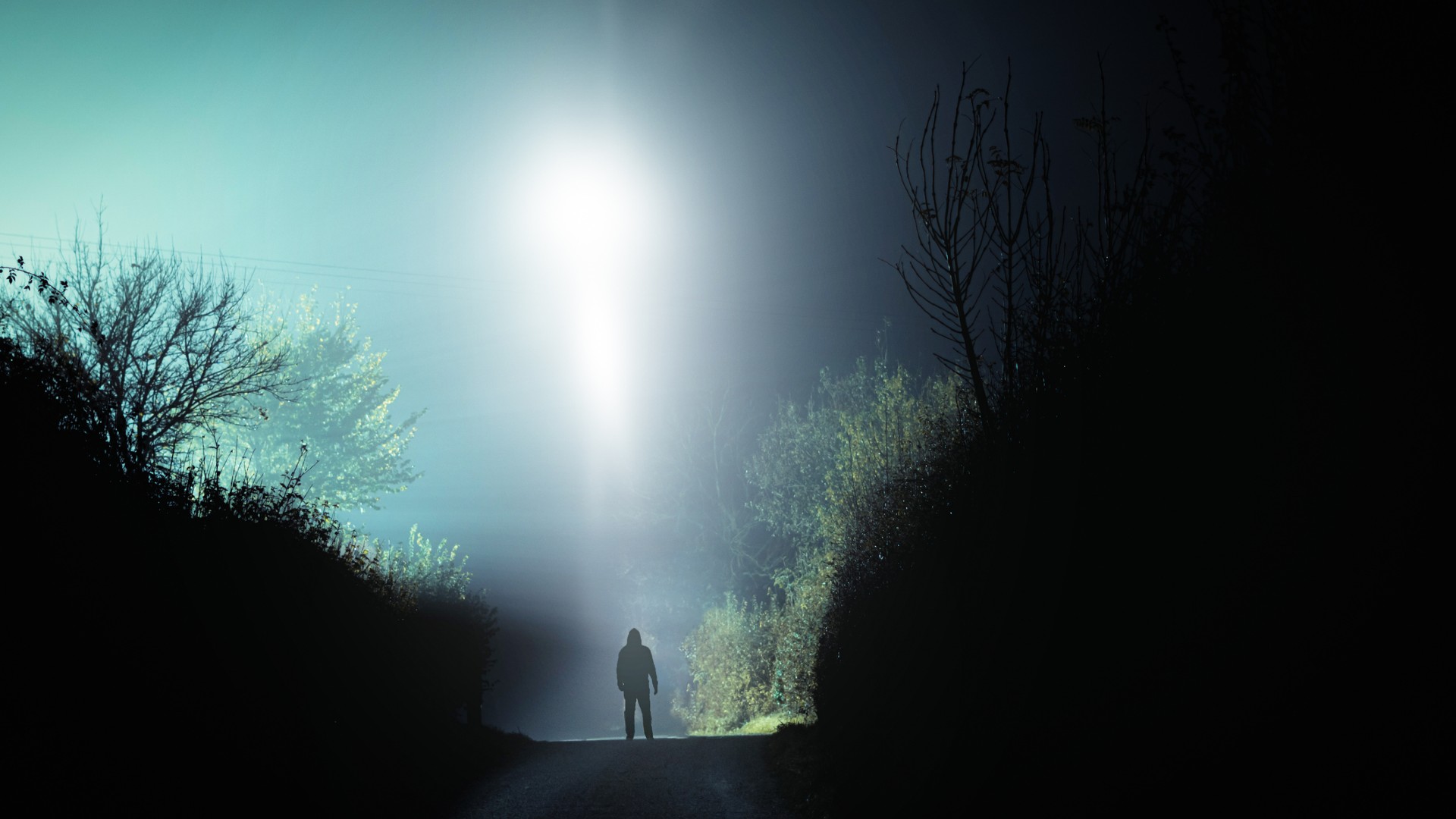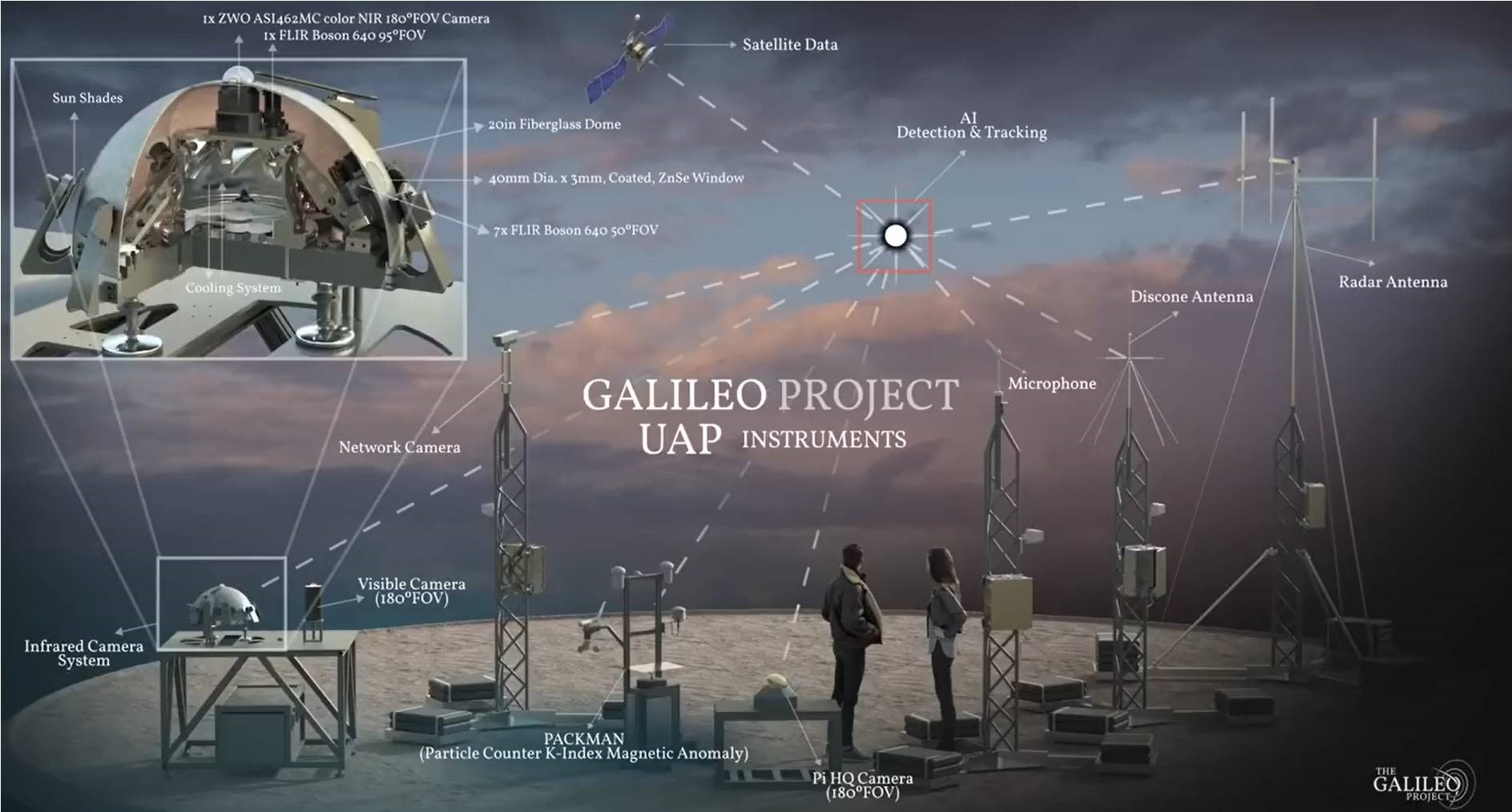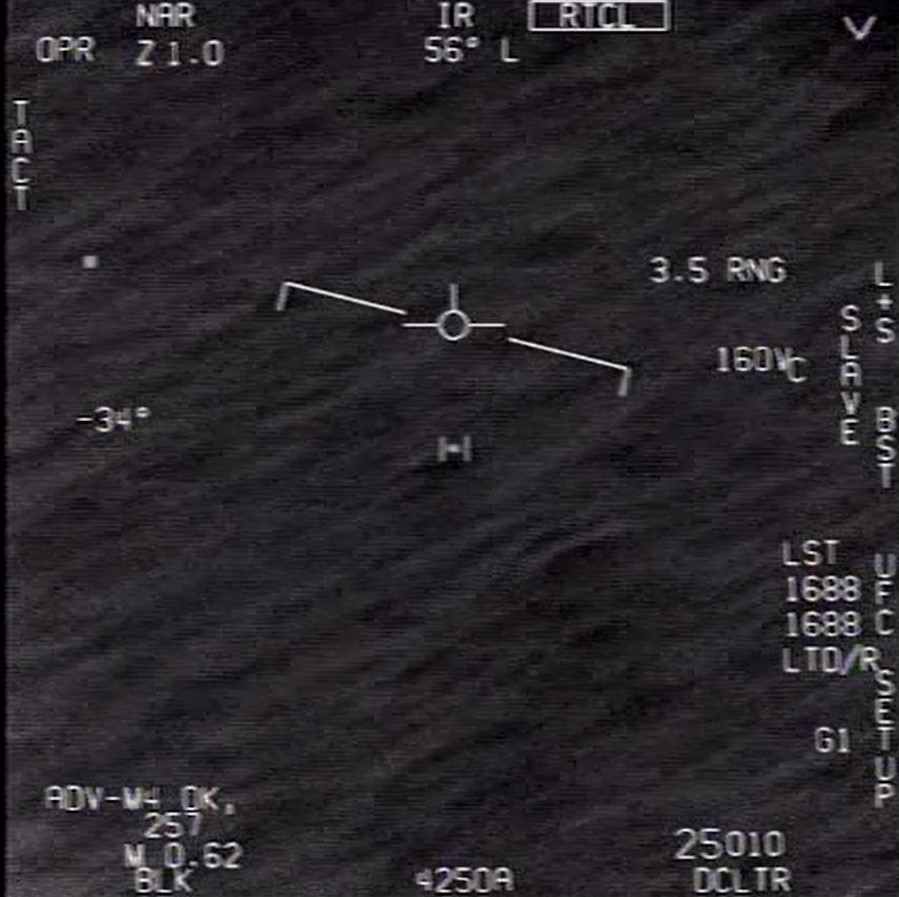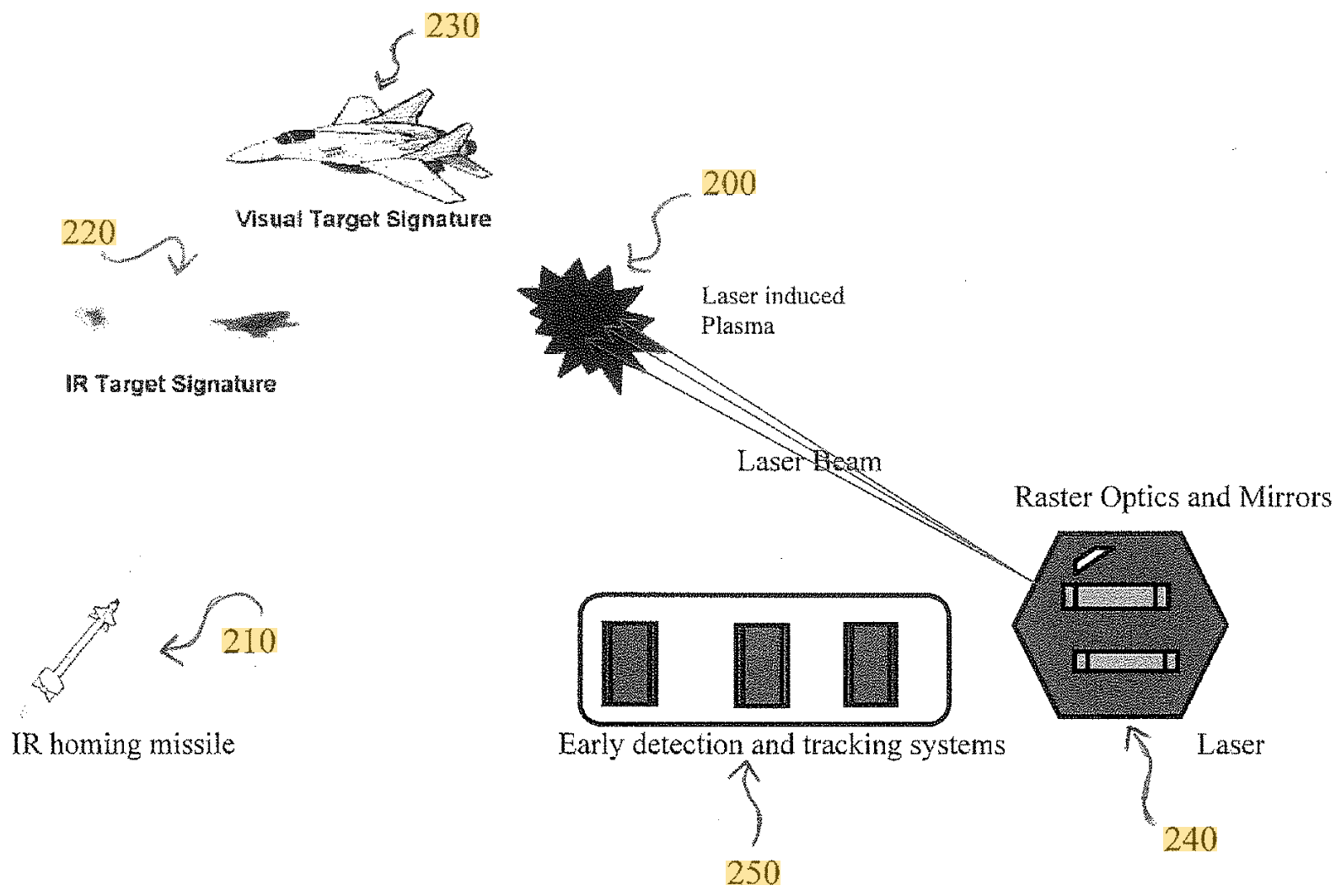
Unidentified anomalous phenomena: Hot spots and the quest for better UFO data
For many anxious to throw light on UAP, it's all about reliable, truth-revealing, and scientifically rigorous data collection.

Regularly linked to alien-occupied flying saucers that have stopovers on Earth from the outer reaches of deep space is an equally puzzling enigma: Unidentified anomalous phenomena, or UAP, a new term that encompasses objects that can't immediately be identified that are detected in the sky, under water or in space or that appear to travel between these domains.
Specialized sensors are now being dispatched into the field. This gear is built to sight UAP and decipher what's behind frequent sightings in certain hot spots of activity. For years now, the UAP mystery has blossomed, driven in-part by military pilots that have recalled their related encounters. Congressional hearings, specially set up military organizations, even NASA itself — all have been engaged in their own close-encounters with UAP. So far, a consistent cry is "more data."
Even SpaceX chief rocketeer, Elon Musk, admits he is hounded by those seeking the answer to the 'are we alone' query. "Are there aliens? Or is it … are we alone? People often ask me if I've seen any evidence of aliens. I unfortunately have seen no evidence of aliens yet. We are the aliens as far as I can tell. And I think if anyone would know, it would probably be me, and I have not seen any evidence of aliens," Musk recently said.
To be in the know, and for many anxious to throw light on UAP, it's all about reliable, truth-revealing, and scientifically rigorous data collection.
Related: NASA UFO report finds no evidence of 'extraterrestrial origin' for UAP sightings
Progress and improvements
There have been several attempts since the 1950s to use specialized sensors to identify UAP, said Robert Powell, Executive Board Member of the Scientific Coalition for UAP Studies (SCU). "The problem has always been the unlikelihood of having a UAP show up where your high quality sensors happen to be located."
Today, a number of modern groups have developed UAP detection systems, Powell said. "Definite progress and improvements have been made."
Get the Space.com Newsletter
Breaking space news, the latest updates on rocket launches, skywatching events and more!
While the ability to build and deploy these types of systems is farther ahead today than ever before, said Powell, "none of these current programs have either quantity of systems or a quality standardized system that would allow for large numbers to be utilized in a controlled fashion."
Powell believes a successful UAP detection program will require a sizable budget to build, distribute, and maintain 1,500-plus UAP sensor systems, "but will also need to be able to hire staffing for the development and maintenance of such systems."
What's a cha-ching calculation ringing out from the cash register? In the tens of millions of dollars, Powell estimates.
Multimodal census
Taking a scientific stab at untangling the UAP conundrum is the Galileo Project, an effort led by Harvard astrophysicist Avi Loeb.
This initiative has built an integrated software and instrumentation system designed to conduct a multimodal census of aerial phenomena and to recognize anomalies. Loeb believes that UAP present a long-standing mystery that can and should be investigated by the tools of contemporary science.
Loeb told Space.com that testing of the detection equipment is underway at a Harvard Observatory site and that the Galileo Project would be assembling a second observatory in Colorado.
"We are starting to collect data with our Harvard UAP Observatory and aim to analyze it with machine learning software," said Loeb.
The goal is to automate the identification process and check whether objects are natural (birds, bugs), human-made (balloons, drones, airplanes), Loeb said, "or something from beyond Earth."

Wanted: consistency
Taking a fresh and novel look at the UAP detection scene is Alex Hollings, editor-in-chief of Sandboxx News. He notes that the Defense Department has used a wide variety of sensors to detect UAP in different circumstances, including electro-optical (video), infrared, and radar.
However, there doesn't seem to be a great deal of consistency, Hollings said, regarding detection across sensors. "That is to say that in some incidents, anomalous objects may be detected for instance by radar, but then not in others."
One element of the sensor conversation that's gone "under-discussed" in Hollings view, is the variety of radar arrays and frequencies that have been leveraged in reported UAP incidents.
"There have been cases where the powerful shipboard radar systems leveraged by Aegis destroyers do detect an anomaly, while the fire-control radars aboard scrambled Super Hornet aircraft don't. That's sometimes seen as an element of added mystery, but today's tactical stealth aircraft can also produce different results depending on radar frequency. But beyond finding the right radar frequency, we also need to find a way to sift through all of the data we have more effectively." Hollings said.
Mountain of data
In the big picture radar scene just here in the U.S. consider all the territory the military keeps tabs on every day. It comes out to around 29 million square miles (75 million square km).
"So, in order to sift through all the chatter, the military establishes filters, akin to when a person searches for a used car online, effectively saying: 'Only show me things that meet this criterion.' It takes a mountain of data and turns it into a pretty large pile, and then people are stuck pouring over that pile to look for threats or issues," said Hollings.
The same is true for integrated air defense systems and more localized radar arrays. Take for instance the MIM-104 Patriot system that works in a similar fashion, Hollings points out, only flagging returns that might represent inbound threats.
"But all these arrays do detect a ton of other stuff, from flocks of birds to dense clouds and everything in-between," observed Hollings.

Leveraging artificial intelligence
"Going through all of that radar data is nearly impossible for human eyes, but leveraging artificial intelligence to sift through all the static may yield promising results," Hollings said.
Similarly, AI might eventually be able to detect stealth aircraft using existing radar arrays by just filtering the chatter — perhaps a capability useful to detect UAP to cull out a trend or pattern associated with them.
"If UAP researchers can identify some commonalities between anomalous radar returns, those can be used to train AI to hunt them down elsewhere," said Hollings.
Propulsion detection
Then there's use of infrared or thermal detection to identify and learn more about UAP.
"Heat detection can obviously tell us a lot about propulsion, that is, if we're talking about something that has propulsion. If so, whether or not UAP makes use of a combustion-based model via exhaust. And if there isn't exhaust ... well then we're talking about something that either doesn't use propulsion, like a natural phenomena, perhaps, or something that uses a form of propulsion that we're entirely unfamiliar with," said Hollings.
But beyond propulsion, Hollings said he's interested to see how infrared sensors can capture UAP to determine whether or not these things could potentially be some sort of laser-induced plasma filament holograms. The U.S. Navy just so happens to hold a patent for such a technology.

Holograms and Occam's Razor
"Such a hologram would be capable of incredible speeds and maneuvers that seem to defy physics, may not produce a radar return, and could potentially be very convincing," said Hollings. "Over water, I contend that it may be possible to project such a hologram from a surfaced submarine ... but that's a tall order," he said.
Projecting such a hologram over land would be an even taller order, Hollings added. But admittedly, Occam's Razor rears its head. That's a scientific and philosophical rule calling first for the simplest, known quantities of competing theories over more complex explanations of unknown phenomena.
This means invoking Occam's Razor over alien visitors in the absence of any other data, Hollings said.
Military activity
Earlier this year, jumping into the UAP fray was RAND, a think tank to help perk up policy and decision-making through research and analysis. Their report was titled, Not the X-Files - Mapping Public Reports of Unidentified Aerial Phenomena Across America.
RAND specialists looked into where are people likely to report sightings of UAPs in the United States. Also, what factors predict where people are more or less likely to report UAP sightings?
Results from the RAND analysis yielded advice for government officials, pointing to outreach with civilians located near military operations area, and the need for improvements in data collection.
"We hypothesize that many civilians may not be aware that they are located near areas where military operations occur," the RAND study points out. UAP reports are significantly associated with areas of military activity. If some of these UAP reports are in fact authorized aircraft, the report continues, "then communicating that such activities are being conducted nearby could reduce the likelihood that the public will report these aircraft as UAPs."
Public reporting
Furthermore, the RAND appraisal of the situation calls for design of a detailed and robust system for public reporting of UAP sightings. Such a system — perhaps managed by government agencies or non-government groups — would be useful in minimizing hoaxes and reports of misidentified objects. Indeed, public reporting of anomalous phenomena, the report adds, could be an asset for government authorities to identify potential threats in U.S. airspace.
"Greater transparency in how sightings are collected, investigated, and used may also help mitigate the conspiracy theories that have long surrounded aerial phenomena," the RAND study concludes.
All in all, there is a palpable uptick of action-item angst to get to the bottom of UAP identification. And that equates to digging in deep with data contends Sandboxx News editor Hollings.
"I think the only way we can find answers for UAP is by taking a systematic approach to identifying patterns in the data, he concludes. "If we can find just one commonality across multiple occurrences, it gives us a data set to search elsewhere at best … or at worst, may be able to point us toward new detection methods."
Join our Space Forums to keep talking space on the latest missions, night sky and more! And if you have a news tip, correction or comment, let us know at: community@space.com.

Leonard David is an award-winning space journalist who has been reporting on space activities for more than 50 years. Currently writing as Space.com's Space Insider Columnist among his other projects, Leonard has authored numerous books on space exploration, Mars missions and more, with his latest being "Moon Rush: The New Space Race" published in 2019 by National Geographic. He also wrote "Mars: Our Future on the Red Planet" released in 2016 by National Geographic. Leonard has served as a correspondent for SpaceNews, Scientific American and Aerospace America for the AIAA. He has received many awards, including the first Ordway Award for Sustained Excellence in Spaceflight History in 2015 at the AAS Wernher von Braun Memorial Symposium. You can find out Leonard's latest project at his website and on Twitter.
-
Starcrow ReplyAdmin said:
Admin said:(...) it's all about reliable, truth-revealing, and scientifically rigorous data collection.
For reliable, truth-revealing etc. data see what the four college professors involved in the Lubbock Lights case and some astronauts testified decades ago. Space.com is still in the Stone Age concerning this matter.
Admin said:
Unidentified anomalous phenomena: Hot spots and the quest for data : Read more -
Dave True. Space.com continues to be in the stone age. First and foremost those that believe we are not alone do not share facts on a level playing field. Only writers who believe 'we are alone ' in the universe, write articles on NASA websites and Space.com. What are they afraid of? Let's not speculate . They have their reasons.Reply
The military will continue to lie, cover up and misdirect the public concerning evidence of UAP's. The UFO congressional hearing dated July the 26th, had three whistleblowers revealing the truth concerning UAP's. Hundreds of credible witnesses before them have testified. The good news is that bipartisan members of congress are investigating. We can look forward to more testimony where the truth is finally being revealed.
The Galileo Project looks very promising. All evidence of intelligent lifeforms observing our world is a worthy endeavor. -
Unclear Engineer So, I looked up Lubbock Lights and read about them at Histrory.com. The article starts off with a story about a highly credible group of scientists seeing a formation of lights at 9:20 pm on August 25, 1951. It then goes into many more sightings of the same and similar sightings, and describes how they sometimes repeat and always go from north to south. But, it doesn't contain the times of the other sightings. I would expect an analysis of the timing of the sightings would be a critical element of a real scientific analysis, but that was not mentioned.Reply
My first impression is not an alien armada, but rather some sort of orbiting phenomenon. Perhaps a broken apart natural object entering the Earth's atmosphere in batches and burning up, over an extended period. Sounds strange, but does seem to fit the general gist of the sightings.
It seems too early in our history to have been a human-made object placed into orbit, especially a polar orbit. -
billslugg From Wiki article on Lubbock lights.Reply
"Clark wrote that the professors observed one formation of lights flying above a thin cloud at about 2,000 feet (610 m) which he says allowed them to calculate that the lights were traveling at over 600 miles per hour (970 km/h)". - Clark, pp. 343–344
This is not computing. "Thin cloud at 2,000 feet" is very unusual. Thin stratus at extremely low altitude. Not over water. Having trouble with the cloud type and possible conditions. Not making sense.
How did they know the cloud elevation? What significance could that possibly have to a speed calculation?
I'm dubious on this one. -
Unclear Engineer The History.com link said that the attempts to estimate height were not successful.Reply
It is really hard to estimate the height of anything suspended in the air unless you know its physical dimensions, even when the atmosphere is not playing refractive or reflective tricks on the observer. -
billslugg You are correct, at 2000 feet, size is our only clue. Binocular vision is good to only about 800 feet away.Reply
I think I have a good explanation. At 9 PM the air is cooling off. There may have been a low fog bank forming in a layer of moist air at"2000 feet". Halos can form around point sources at a distance when viewed through such a thin cloud made of very regular water droplets. Could have been airplane landing lights or maybe magnesium flares. -
Starcrow All right, so discard that case that the Space.com crowd dislikes. It's unnecessary. There are many other credible witnesses. What about the astronauts? I'll have to go over my many old books on the ETs and mention a few more cases, titles and authors. Back in the 70s I took a free course given by CostaRican contactee Enrique Castillo Rincón, who died a few yrs. ago. He was a communications engineer. I'm a wounded veteran of the war against what they call "debunkers". You all keep asking: if they're here, why do they hide? They don't. The good ones associate directly only with their moral peers, the evil ones --it's a galaxy at war-- ditto (with those who own and control everything and resort to murder in order to hold on to power). The former respect our free will and will never get involved and solve all our problems (they approach us on a personal basis, mostly), and besides, they also respect our intimacy (privacy). For most of us the presence of mind readers would be scary and embarrassing. This is not the place for discussing these matters, but they asked for it. I suggest they forbid all discussions on the ETs before it gets out of hand. It might be best for me to cease and desist. It's not for me to go around waving flags and stepping on sensitive toes.Reply -
COLGeek And yet there hasn't been the first, verifiable shred of evidence provided by any source. Hearsay is definitely not factual and eyewitness testimony has been proven to be faulty, in even less controversial topics.Reply
Congressional interest is for the cameras, not the facts. People watch way too much TV and consume WAY too much social media (which feeds on itself).
Folks are entitled to believe what they believe. Until someone gives us something solid, to consume/consider (and measure, analyze, etc), you won't change the minds of skeptics. -
billslugg If the Lubbock Lights incident was not the strongest arrow in the quiver, it would not have been mentioned first. Whatever the next up is, it will be weaker.Reply
But all of that is irrelevant. No human produced testimony, chain of logic, image, whatever can stand alone as proof. It must be accompanied by a repetition at will by an independent observer. No UFO report has ever met that standard. Every single scientific advance has. -
Starcrow The astronauts include "Buzz" Aldrin (Apollo 11, 1969, first manned moon landing, in the same year I graduated from high school and the year of the muddy Woodstock Festival in New York State), who appears in the movie, freely available at the YouTube website, based on the book Unacknowledged -- An Exposé of the World's Greatest Secret (2017) by Steven M. Greer, M.D., which includes some of the testimonies of "hundreds of military personnel, scientists and civilians who had top-secret access to Unacknowledged Special Access Projects (UDAPs)".Reply
Astronomer J. Allen Hynek's The U.F.O. Experience, A Scientific Inquiry (1972) was written after he realized he was being tricked and used as a "debunker" by Project Blue Book. It was he who had invented the laughable marsh-gas explanation.
U.S. Air Force Major Donald E. Keyhoe's Aliens From Space (1973) is another classic of the genre.
The Coral and Jim Lorenzen books (the 60s) describe very many cases. Among the most impressive is the one in which Reverend Father W.B. Gill of the Boiani Anglican Mission in New Guinea in 1959 saw a spacecraft floating offshore and its occupants doing something on it, maybe repairing it. He waved at them and they waved back but showed no interest in approaching him. They were just trying to be polite, which is not a universal behavior, as the nasty examples show. It's not just us, but that doesn't justify our savage cruelty.
In modern times it all started with the foo fighters in the last months of World War II, when no one knew what was going on, but now, nearly 80 yrs. later, almost everybody knows, but not the fools who keep ...
1) ... saying that only "silly" fools could believe that the Visitors are everywhere around us and have always been here,
2) ... repeating "ad infinitum" the naïve story about the Fermi Paradox, and
3) ... thinking that interstellar travel, let alone intergalactic travel, is impossible even with spacecraft that move at the speed of EM radiation (such as light, radio waves, gamma rays), except on trips involving several generations, so that a first generation dies during the trip and only a second or third generation arrives at the nearest star and will never be able to return.
(A trip to Proxima Centauri would take only 4.3 yrs. at that speed but a message would spend the same amount of time to arrive, so that dialogues with those at our nearest star would take decades, an outrageous affair.)
History shows that one had better not assume anything about the future based on present technology. Lord Kelvin is just one of the several famous scientists who made this mistake. I won't spare anyone the effort it takes to find out exactly what it was that he said that eventually made him look like ... just another dolt.
... and remember, we're an entire galaxy at war with itself, as in the "Star Wars" series, and it could be in your lot to run across the bad guys while rolling along a lonely road and get pregnant, as Mr. E. Castillo R. warned and even the NASA, incredibly, is now hinting. They mention "unexplained pregnancies" but refuse to give any details, which is criminally irresponsible of them. They, too, are terrified, since our nuclear weapons are entirely useless before the interlopers.
Some people say that the good guys have now placed the planet in quarantine in order to protect us, but I doubt it. Our inferior type of humankind, which enjoys the idea of enslaving and raping, surely deserves to be dragged into slavery, and it's one of several possible futures. ACHTUNG!!!









